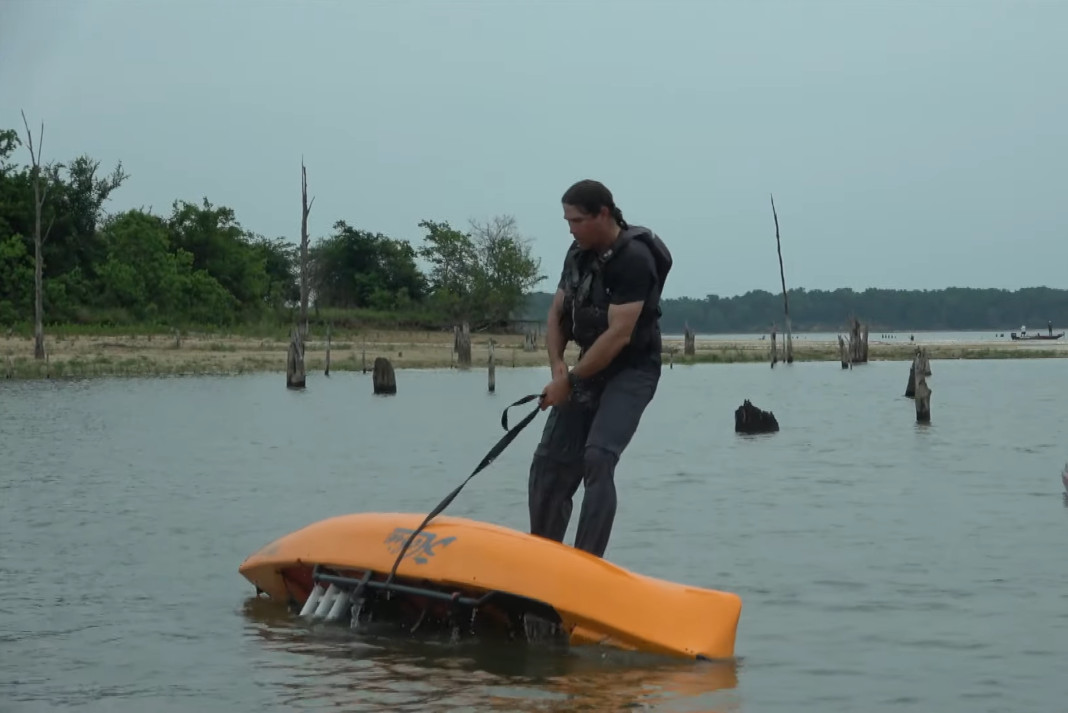“What in the hell is wrong with kayak anglers?” Each week, I receive a message asking this question. Along with why are kayak anglers in the way? Why do kayak anglers put themselves at risk? Why don’t kayak anglers learn how to fish? Why don’t they learn how to kayak?
I’m not the only one fielding these questions. The U.S. Coast Guard (USCG), Water Sports Foundation and American Canoe Association (ACA) are also working on answers.
Licensed to Kayak: ACA Launches Accredited Kayak Fishing Courses
Despite best efforts to improve kayak fishing safety, the latest USCG Recreational Boating Statistics report revealed 14 percent of boating deaths involved kayaks, second only to open motorboats.
As a result, the ACA developed a kayak fishing safety course. The ACA certifies guides and outfitters through rigorous training programs. Now, they’ve added kayak fishing to the list of endorsements.

The program is just starting out and only a few instructors have completed the training. Jeff Little is a longtime fishing guide and industry insider who recently finished the kayak fishing course. With the first graduates taking their certifications on the water, we asked Little about the future of the new program.
Kayak Angler (KA): What is your background with the ACA kayak fishing course?
Jeff Little (JL): Twenty years ago, I almost died of hypothermia when I fell into a freezing river and I didn’t know about cold water survival. Before I became a kayak fishing guide, I completed the American Canoe Association whitewater course. I used the training as the basis for kayak fishing courses I taught for 10 years. Other guides have developed their own kayak fishing courses, but there wasn’t a standard curriculum or certification as a kayak fishing instructor.
The ACA worked with kayak fishing guides to develop a course teaching the basics of operating a fishing kayak. The big motivating factor is speeding up the learning curve. A negative experience in a kayak could prematurely end a new angler’s pursuit of the hobby. Instead of going down a rapid, losing all your gear and deciding to take up disc golf, the course teaches skills that encourage anglers to stick with kayak fishing and help grow the sport.
KA: Who are the instructors?
JL: This is the dawn of the new wave of instructors. I recently attended the kayak fishing training with six other instructors. All of us make our living in kayak fishing and care about instructing safe and effective anglers.
Anyone can say he’s a guide and put an angler on fish, but not everyone can say he’s an ACA-certified instructor who can teach kayak fishing skills. In addition to the ACA certification, we also need CPR and first aid instruction. It’s totally legit.
KA: Why should I take this course?
JL: A lot of people say, “I don’t need a kayak fishing course because I can already use my kayak.” But paddling skills provide greater endurance and improved boat positioning.
For example, a paddle stroke called the sculling draw moves the kayak sideways. This maneuver is essential for skipping a Senko into a dock. Using the sculling draw, I line up the boat to get the lure deep under the dock.
The course will also improve paddling form. Course participants will go farther and paddle more quietly without spooking the fish. An angler needs to cleanly insert the paddle instead of churning butter.
Of course, a big part of the course is safety instruction. Participants will understand how to leave a float plan and what to do in an emergency. In the end, any paddlesports course has to cover safety.
When anglers finish the course they have two things: a participation card in a skills course and a paddlesports safety facilitator card. This says the cardholder knows about paddlesports safety. The ACA provides more than skills, the class covers instruction and theory.
KA: What should participants expect?
JL: The courses we offer are not guided fishing trips. That’s not to say instructors won’t offer guided fishing trips, but the kayak fishing course is more valuable than a guided fishing trip. A guided fishing trip puts anglers on fish for a day, a kayak fishing class teaches skills for a lifetime.
During our training, we made sample course outlines as an exercise. I was given the parameters for a four-hour course for first-time anglers. Other participants were given an eight-hour time frame with intermediate anglers.
Each of us came up with a unique curriculum that was a mixture of paddle and fishing skills. We could choose activities from the paddling skills and add our own stuff to the curriculum. Depending on the instructor and the students, each course will be different.
Each guide also decides how to teach the class. Some instructors will combine classroom time with on-the-water instruction. Sections of a course could be online or virtual.
For example, I plan to teach classes during Kayak Adventure Series (kayakadventureseries.com) events. These low-entry-fee weekend meet-ups are held in out-of-the-way towns with old movie theaters. It’s part tournament, seminar and film festival. The six-part series is a good venue to hit a lot of people interested in increasing their skill set.
ACA kayak fishing instructor training starts out on the water. | Feature photo: Georgia River Network












So why don’t you tell us where to find these kayak fishing courses because I went to the ACA website and I don’t see any specific kayak fishing courses.